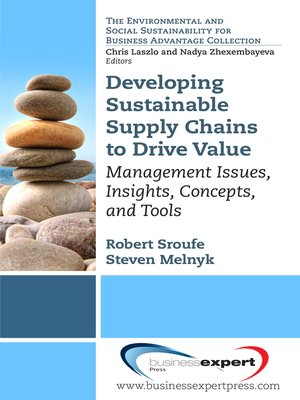Developing Sustainable Supply Chains to Drive Value
ebook ∣ Management Issues, Insights, Concepts, and Tools
By Robert P. Sroufe

Sign up to save your library
With an OverDrive account, you can save your favorite libraries for at-a-glance information about availability. Find out more about OverDrive accounts.
Find this title in Libby, the library reading app by OverDrive.



Search for a digital library with this title
Title found at these libraries:
| Library Name | Distance |
|---|---|
| Loading... |
As we enter the 21st Century, we find ourselves faced by two major developments. The first is emergence of the supply chain as a critical strategic and tactical weapon. As has been pointed out by many researchers, with the emergence of the supply chain, the unit of competition has shifted from the firm to the supply chain. However, with the advent of the supply chain, it is important to recognize that we have to view strategic objectives within a context that stresses not simply the internal operations of the firm but also the elements of the supply chain - elements that include the supplier base, customers, logistics linkages, and relationships, both visible and virtual. We are now coming to realize that the supply chain is no stronger than its weakest link. The second development is that of sustainability. This is more than simply being environmentally responsible. Rather, it is overall sustainability as measured in terms of the firm's ability to reduce waste, improve profitability, generating strategic competitive advantages, and ensure that it treats its employees well. Sustainability is increasingly becoming at a minimum an expectation and a requirement for doing business (i.e., an order qualifier) and under many conditions something that differentiates firms and makes them more attractive to potential critical consumers (i.e., an order winner). These two developments, while often treated as separate entities, are interrelated. It is this interrelationship that forms the major focus and thrust of this book. This book presents the reader with an integrated, business oriented treatment of sustainable supply chain management that explores why it is no longer enough for a firm to focus on sustainability within the four walls of the firm. Rather, in today's environment, sustainability must involve the supply chain in a deliberate and integrated fashion. To succeed with sustainability, a firm must ensure that this outcome is not only present within the firm but is also present within the supply chain. As the book will show, the market and consumers will punish those firms that promise sustainability but are not able to deliver on this promise because of problems in the supply chain.







